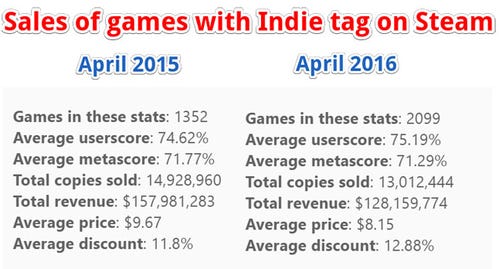Trending
Opinion: How will Project 2025 impact game developers?
The Heritage Foundation's manifesto for the possible next administration could do great harm to many, including large portions of the game development community.
SteamSpy now has a year of data to pull from, and it seems the increasing numbers of games on Steam means that games that are not major successes are selling worse.

SteamSpy has emerged as an important tool for public Steam sales data; while it's not perfect, developers of the games it tracks have vouched for its general reliability. The large pool of data can help uncover trends, too.
As the service turns one, its owner, Sergey Galyonkin, has revealed that the increased number of games on Steam is, unsurprisingly, translating into lower numbers of owners for all of the games on the service -- but the really popular games are actually doing just fine.
Galyonkin exposed this data in a stream of Tweets and a short blog post on Patreon today, so we're going to organize the most important takeaways here.
The average number of owners of a game with the "indie" tag has dropped dramatically year-on-year; more games fitting that description were added to the service, but fewer overall games across the metric were sold.

Galyonkin Tweeted just how far the median "indie" game sales were down, year-on-year. The stats below cover the first 24 days of April 2015 and 2016.
Median indie games sales in April 2015 were 5,400 copies and they dropped to 2,800 in April, 2016.
— Steam Spy (@Steam_Spy) April 26, 2016
On the other hand, the top 10 seems to be stable:
But on the other hand the sales for #10 Indie game in April 2015 were 104,000 copies and 102,000 in April, 2016.
— Steam Spy (@Steam_Spy) April 26, 2016
This chart, meanwhile, illustrates how many more games made it onto the service year-on-year:

A median game on Steam now has 21,000 owners, down from 32,000 a year ago
— Steam Spy (@Steam_Spy) April 26, 2016
Galyonkin broke down this data a little bit more on his Patreon blog, concluding: "... we've got a lot of new bad-selling games on Steam, but it didn't affect the top games, which still sell pretty well."
If you're interested in everything he posted today, you can check out the official Steam Spy Twitter.
You May Also Like